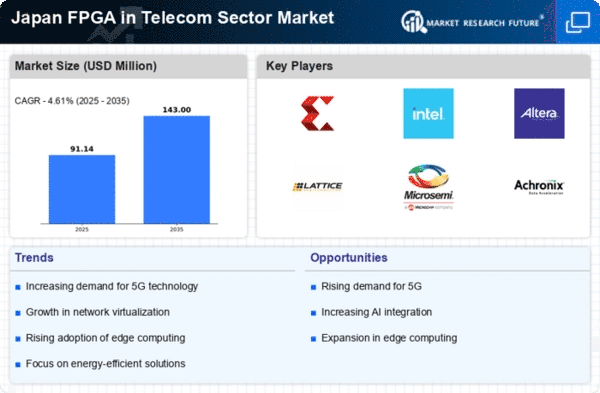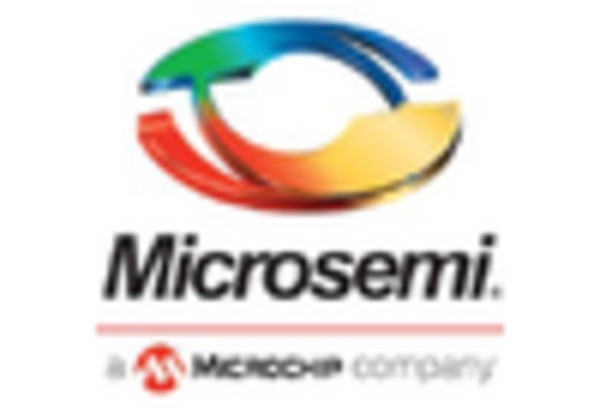Emergence of IoT Applications
The proliferation of Internet of Things (IoT) applications in Japan is significantly influencing the fpga in-telecom-sector market. With an estimated 1.5 billion connected devices projected by 2025, the demand for efficient data processing and transmission is paramount. FPGAs provide the adaptability required to manage diverse IoT protocols and standards, making them indispensable in telecom networks. This trend is further supported by government initiatives aimed at fostering smart city developments, which rely heavily on robust telecommunications infrastructure. As a result, the fpga in-telecom-sector market is poised for growth, driven by the need for scalable and efficient solutions to support the expanding IoT ecosystem.
Focus on Enhanced Security Solutions
The growing emphasis on enhanced security solutions within the telecom sector is a notable driver for the fpga in-telecom-sector market. As cyber threats become more sophisticated, telecom companies in Japan are prioritizing the implementation of robust security measures. FPGAs are increasingly utilized for their ability to perform real-time encryption and decryption, ensuring secure data transmission across networks. This focus on security is likely to propel the fpga in-telecom-sector market, as operators invest in advanced technologies to protect their infrastructure and customer data. The integration of FPGAs into security protocols may become a standard practice, further solidifying their role in the telecom industry.
Investment in Telecom Infrastructure
Japan's ongoing investment in telecom infrastructure is a significant driver for the fpga in-telecom-sector market. The government has allocated substantial funds to enhance network capabilities, particularly in urban areas. This investment is expected to exceed $15 billion by 2025, focusing on upgrading existing networks and deploying new technologies. FPGAs are increasingly being integrated into these infrastructure projects due to their ability to provide high performance and low latency. As telecom operators modernize their systems to accommodate growing data traffic, the fpga in-telecom-sector market is likely to benefit from this influx of capital and technological advancement.
Rising Demand for High-Speed Connectivity
The increasing demand for high-speed connectivity in Japan is a primary driver for the fpga in-telecom-sector market. As consumers and businesses alike seek faster internet services, telecom providers are compelled to upgrade their infrastructure. This shift is evident in the growing investments in fiber-optic networks and 5G technology, which are expected to reach a market value of approximately $20 billion by 2026. FPGAs play a crucial role in enabling these advancements, offering the necessary processing power and flexibility to handle high data rates. Consequently, The FPGA in Telecom Sector market is likely to experience substantial growth as telecom companies adopt these technologies to meet consumer expectations.
Shift Towards Virtualized Network Functions
The shift towards virtualized network functions (VNF) in Japan is reshaping the fpga in-telecom-sector market. Telecom operators are increasingly adopting software-defined networking (SDN) and network function virtualization (NFV) to enhance operational efficiency and reduce costs. FPGAs are well-suited for these environments, offering the flexibility to implement various network functions without the need for dedicated hardware. This trend is expected to drive the fpga in-telecom-sector market as operators seek to optimize their networks and improve service delivery. The potential for cost savings and improved performance makes FPGAs an attractive option in the evolving telecom landscape.
















Leave a Comment